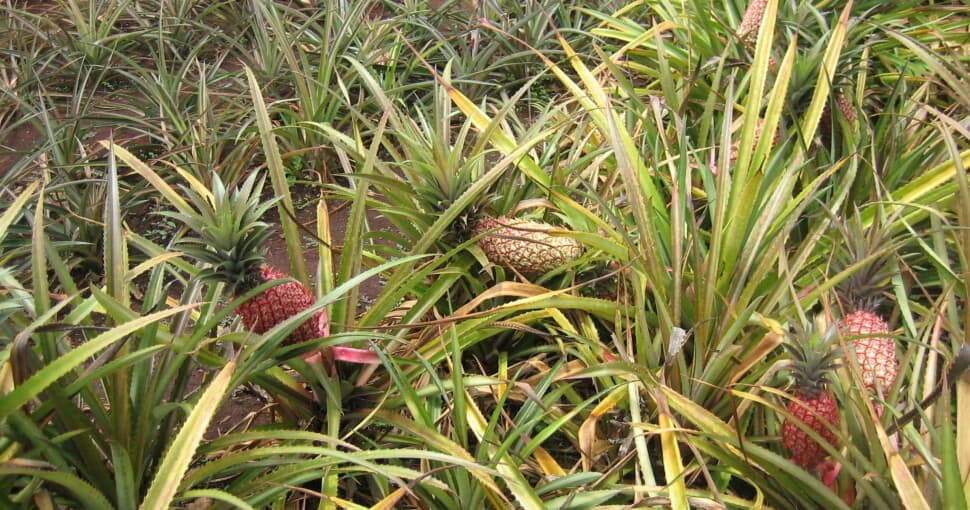Pineapples form part of the Bromeliacae family and are native to tropical and subtropical America, and can be found worldwide. Thanks to their sweet flavors, pineapples have become a staple in many delicious dishes.
Contents
Pineapples have 30 to 40 stiff succulent leaves that fan out from their base and can grow up to 4 to 6 inches in length. Before the pineapple fruit sprouts, small purple flowers bloom in a cascade of rich colors that breathes life into any garden and is a welcome addition to any aspiring botanist’s arsenal.
Thanks to recent efforts by farmers, pineapples can grow in populations of 15,000 to 20,000 plants per acre of land, but they might not be suitable for the climate in your home. Let’s look at seven different plants that look like pineapples that will make your house a home.
1. Bromeliad Plants (Alcantarea Imperialis)
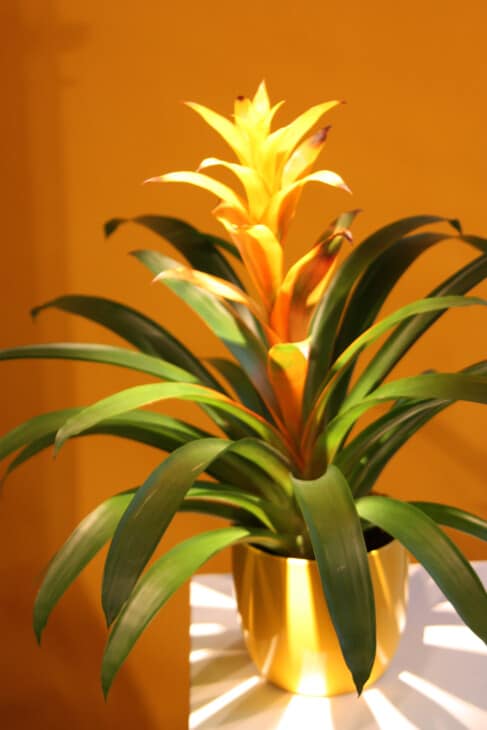
The first plant we can suggest for your garden that looks like pineapples is another plant in the bromeliad family, the Alcantarea Imperialis. This plant has a massive base that grows almost 60 inches wide and densely spirals out in a wide strap-like pattern.
The Alcantarea Imperialis grows at its own pace and can take 8 to 20 years to flower. As soon as its flowers start growing, it produces a 120-inch spike with bright red bracts that grow along the stem, and beautiful yellow flowers sprout from each bract.
The Alcantarea Imperialis prefers well-drained loamy soil and requires little to no maintenance. Simply watering it during the occasional drought will encourage new leaf growth. If you want to improve your plant’s vigor, try adding a little liquid fertilizer. Once you see little “pups” forming around its base, it’s time to separate and replant them to expand your garden.
Related: 9 Plants That Look Like Bromeliads
2. Silver Vase Plant (Aechmea Fasciata)
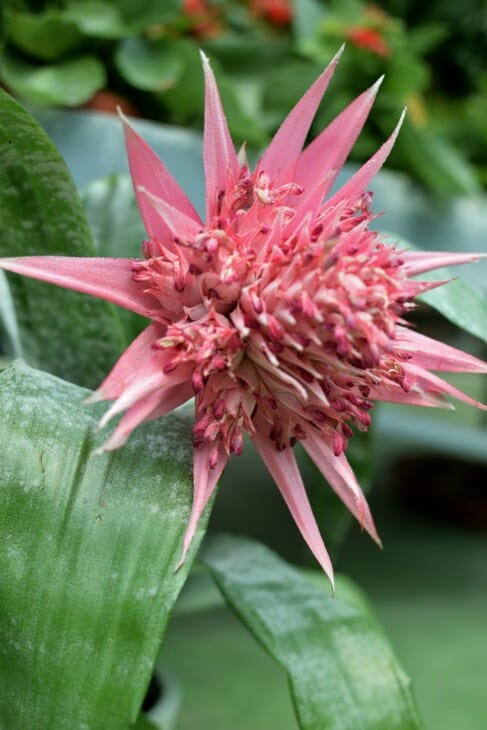
The Silver Vase Plant, or Aechmea Fasciata as it’s known in the botanist community, is one of the world’s most popular and well-known Bromeliads. This pineapple look-a-like has tough arched leaves with silver accents that enhance the sea green base of its leaves and make its bright pink flower pop in any room.
The Silver Vase plant can take several years to mature fully and will require decent care if you want to keep it healthy. Tiny blue flowers will open first after it sends out their bract and will continue to flower for up to six months. First-time Silver Vase owners are encouraged to purchase an already flowering plant as this will give them a more fulfilling experience.
Once they have finished flowering, the base plant will die, and you’ll have to replace your Silver Vase plant. We encourage you to transplant the “pups” from the mature plant that sprouts around its base to avoid spending tons of money.
When caring for your Silver Vase plant, ensure you do not overfill its urns, as its short root system can easily be overwhelmed.
3. Quesnelia Plants (Quesnelia Testudo)
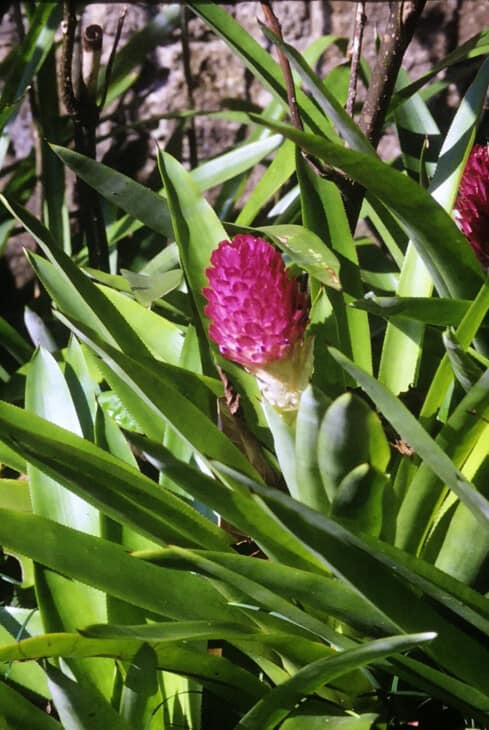
If you are looking for an easy-to-care-for plant that looks like pineapples, we can heartily recommend getting a Quesnelia plant, specifically a Quesnelia Testudo. The Quesnelia Testudo, sometimes called Winter Torch, is perennial and absolutely beautiful in full bloom.
Its leathery dark green leaves have tiny white hairs on the underside and grow into a full rosette pattern without rising too far off the ground. When fully mature, this plant grows to 12 to 18 inches tall and between 12 and 16 inches wide.
The Quesnelia Testudo can easily thrive with little to no care. All it needs to be happy and healthy is water daily and well-draining soil. Placing it in full to partial sunlight near an east or west-facing window will ensure that your little plant gets all the required light.
4. West Indian Tufted Airplant (Guzmania Monostachia)
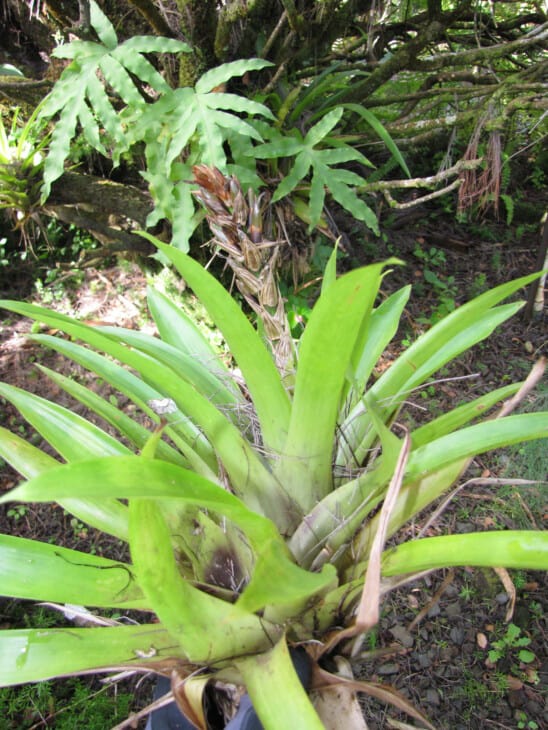
The West Indian Tufter Airplant, or Guzmania Monostachia, is an evergreen herbaceous plant from the same Bromeliaceae family as the humble pineapple and thus shares some common characteristics. This plant is native to South and Central America and some parts of Florida.
The West Indian Tufter is a welcome addition to any home. Its wide base, long bract, and bright red flower will bring a subtle but vibrant pop to any room it’s placed in, provided the room isn’t too cold.
This plant thrives in temperatures between 64°F and 77°F and prefers partial sunlight. Keeping it in a well-drained pot and watering it once a week will ensure your home stays nice and colorful all year round.
Related: 11 Incredible Air Plant Benefits
5. Eucomis Plants (Pineapple Lilies)
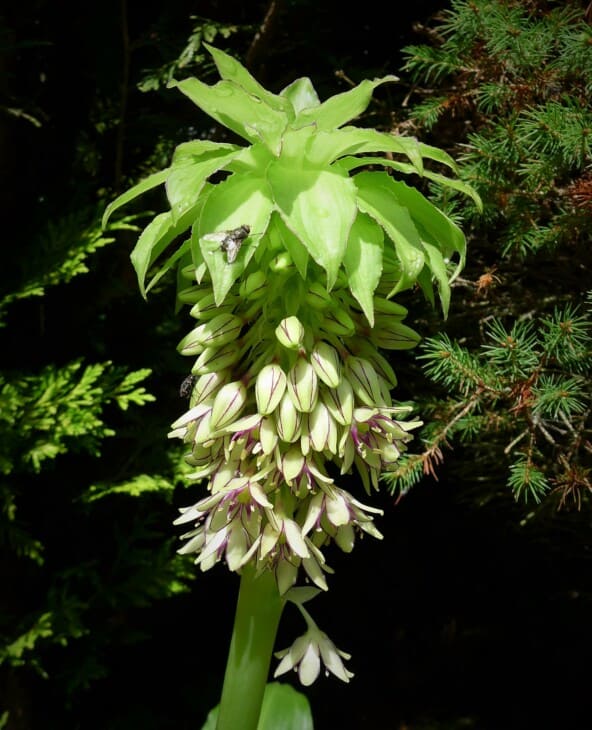
Eucomis plants are great pineapple stand-ins, especially the Pineapple Lilies, hence the name. The Pineapple Lilly is a perfect miniature version of the popular tropical fruit. Their beautiful white flowers and long bracts bring calm and elegance to every garden they are planted in.
These plants don’t grow very tall, standing only 12 to 15 inches high with long green leaves at their base. Aspiring botanists will tell you that Pineapple Lillies are extremely rare in cold environments due to their tendency to die easily from frost.
If you want to add some Pineapple Lilies to your home, ensure that you plant them in well-drained soils exposed to full sun. Small bouts of shade are tolerated but might impede flowering if overbearing. Remember that during summer times, you must water your Pineapple Lilies frequently as they are quite a water-intensive plant.
6. Spineless Yucca (Yucca Elephantipes)
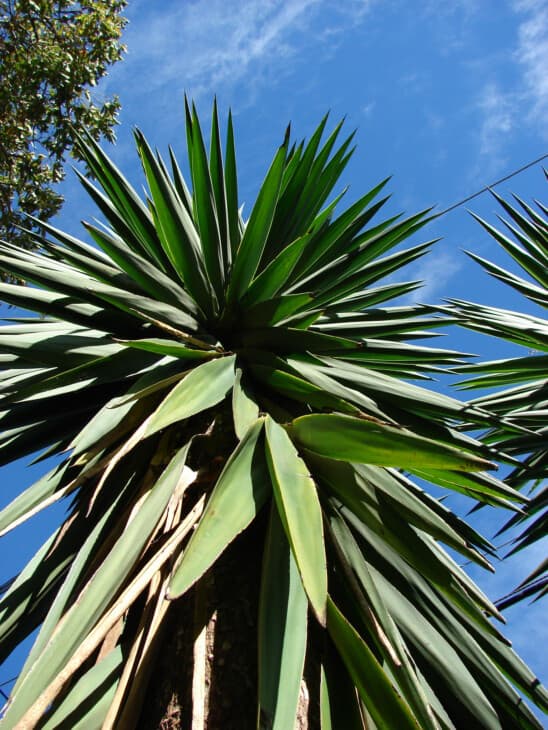
Spineless Yucca or Stick Yucca, otherwise known as Yucca Elephantipes, resembles pineapple bushes but has a large trunk, making it look like a small tree. These little trees love growing outdoors in hot, dry climates.
Related: 7 Plants That Look Like Yucca
This evergreen shrub grows large clusters of pretty white flowers and can withstand temperatures as low as 30°F and as high as 90°F, making it ideal for homes in any climate. Their thick cane stem and long slender leaves make the Spinless Yucca stand out when placed indoors.
If you intend to sprinkle a couple of Spineless Yucca around your garden, keep in mind that they can grow up to 30 feet tall and 25 feet wide, so make sure you give them ample room to stretch their roots.
7. Century Plant (Agave Americana)
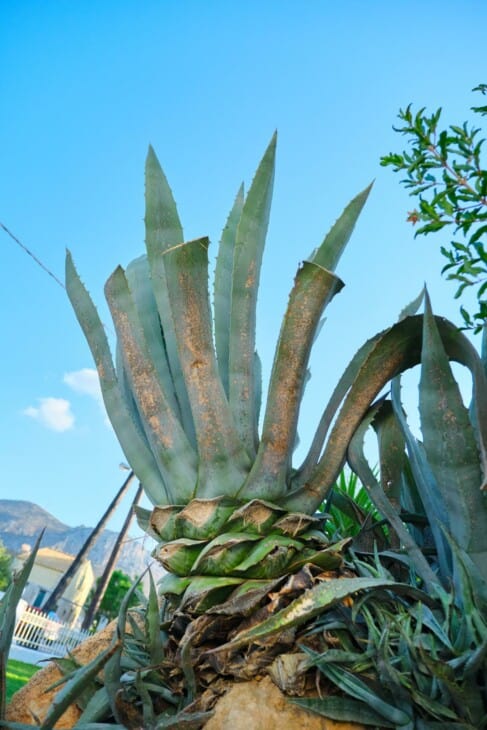
The Century Plant, or Agave Americana or Spiked Aloe, resembles pineapple bushes with short stubby blue-green leaves. They grow to 6 feet tall and take about ten years to mature fully. If you want to add some intrigue to your garden, consider adding some Century Plants into the mix.
Related: 6 Plants That Look Like Agave
The Century Plant won the prestigious Garden Merit Award from the Royal Horticulture Society. They are easy to produce in soils that are well-drained and slightly acidic. When planting Century Plants around your garden, ensure they are planted in direct sunlight. A little shade won’t hurt as long as they spend the majority of their life in the sun.
This plant is great for beds with borders and perfectly accentuates and elevates any garden to feel homier and more professional without adding additional stress to your already swore green thumb. This nifty plant will be your best friend if you love hummingbirds and other avian friends but absolutely detest deer.
The only real thing you need to watch out for when caring for your Century Plant is small-scale insects that love to feed on its rich leaves. If it does start to propagate, ensure that you separate them and spread them out over a large enough area. If your area does experience a time of severe drought, don’t stress, your Century Plant will last through the ages.

